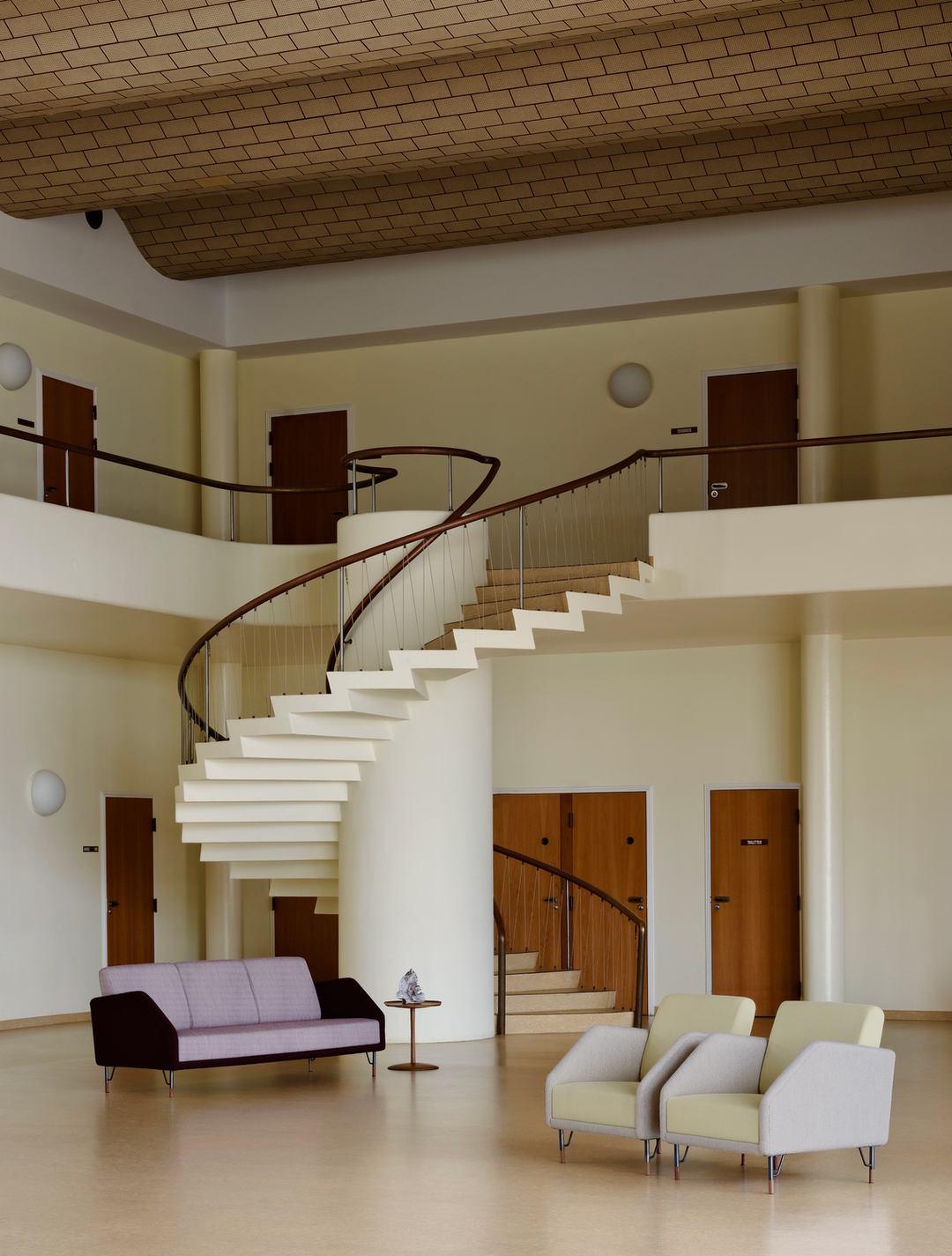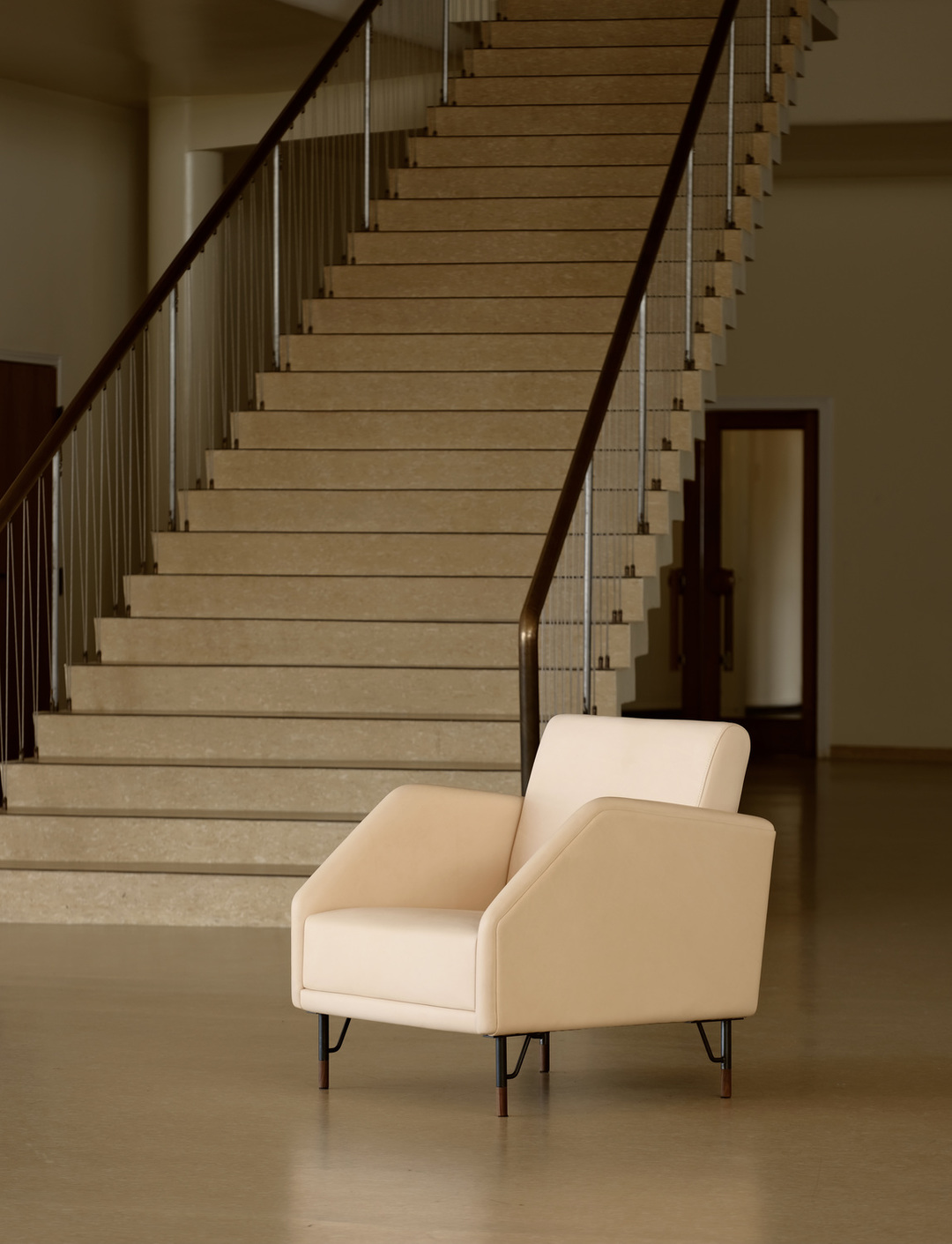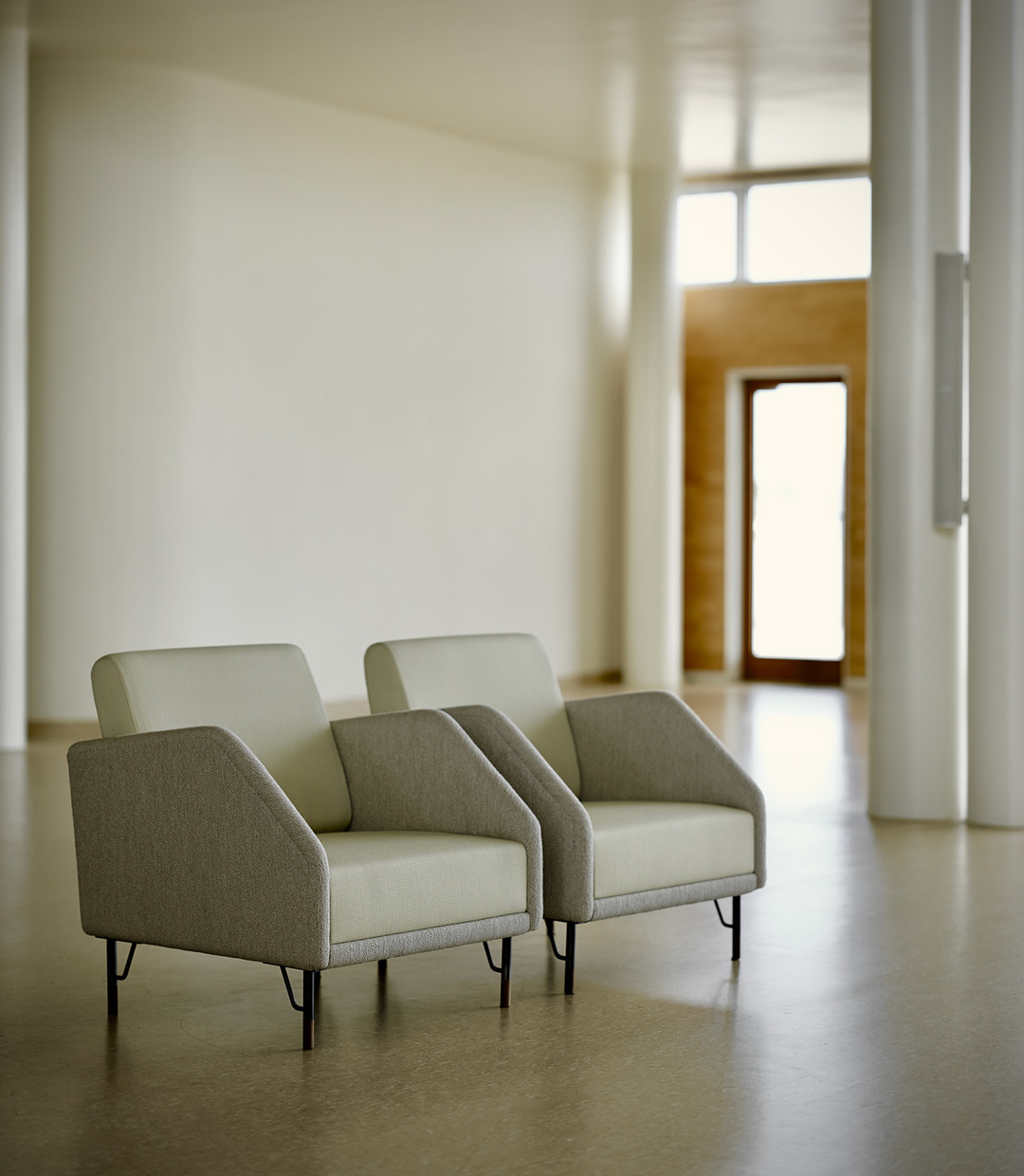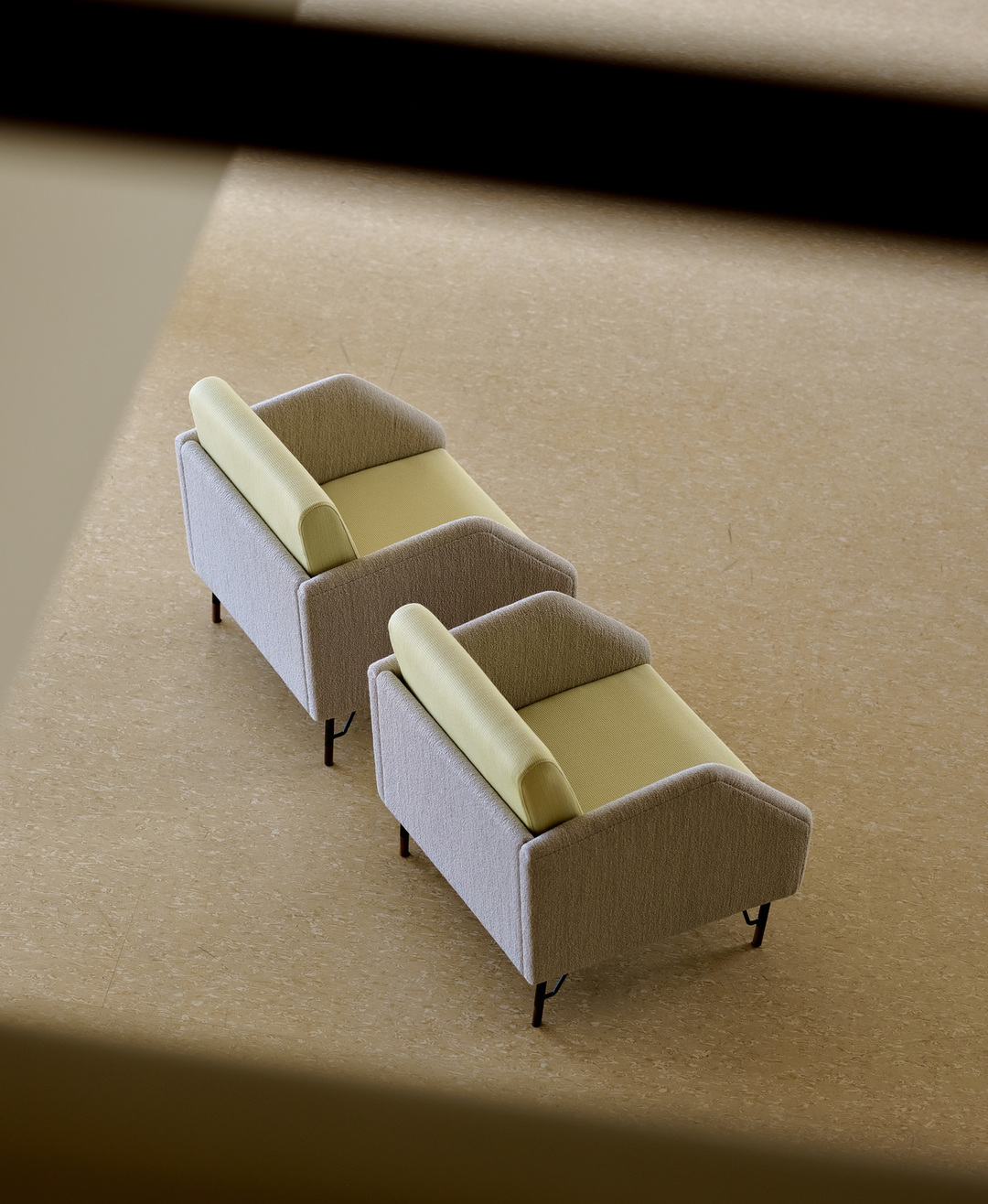Finn Juhl is renowned for his iconic furniture designs and for revolutionising the Danish furniture tradition with his sculptural and artistic design language. His most striking pieces, such as the Chieftain Chair and the Pelican Chair, are often the center of conversations on the importance of Danish furniture. However, today, on the 7th of June, during the design festival 3daysofdesign in Copenhagen, House of Finn Juhl presents his most understated design: the 77 Chair. With its refined and simple expression, this piece of furniture is probably Finn Juhl’s most atypical design as it traces lineage back to the design language prevalent during the Bauhaus era.

The 77 Chair and 3-seater Sofa, from the same series, photographed in the Vilhelm Lauritzen Terminal at Copenhagen Airport. The terminal was completed in 1939 and was one of the projects in which Finn Juhl participated while working for Vilhelm Lauritzen from 1934 to 1945.
American Influence Leading to a New Style
In 1950, Finn Juhl was given the prestigious task of designing the interior for the Trusteeship Council Chamber at the new United Nations headquarters in New York. The chamber was donated by Denmark and is one of the three permanent chambers at the UN. By this time, Finn Juhl had gained access to the American art and design scene, not least through his friendship with MOMA’s design director Edgar Kaufmann Jr.
When the chamber was inaugurated in 1952, Finn Juhl had established an influential network among leading design colleagues such as Charles and Ray Eames, Harry Bertoia, Eero Saarinen, George Nelson and Le Corbusier.
One year after the inauguration of the new UN headquarters, Finn Juhl designed a large collection of furniture for the furniture manufacturer Bovirke with a streamlined and more industrial mode of expression. As the only Danish designer on the international scene, he had left an imprint in the US and brought ideas back home. Inspired by his American colleagues, he incorporated an international touch into his new furniture designs which were carried on slender legs in burnished or painted steel with wooden toes. Simultaneously, strong colours also became a significant design element in Finn Juhl’s design universe – on steel parts, drawers, cabinets and on textiles – which, at the time, was unprecedented in the Danish design tradition.
The 77 Series, of which the chair is a part, evokes memories of the international airport lounges and hotel lobbies of the 50s and 60s, as well as architect-designed homes with large windows and graphic free-standing interiors. Despite numerous images of the series, the design literature rarely mentions the 77 Chair among Finn Juhl’s steel-legged furniture. Instead, the design literature primarily acknowledges the Table Bench with brass edges, the Sideboard with coloured fronts and trays, the Panel System, and most notably the Nyhavn Table, which have all attained a status of classics in today’s design realm.
However, the 77 Chair does constitute a turning point in Danish design. Finn Juhl once again broke with the conservative language of the Klint School when he placed an upholstered body on slender steel legs, causing the furniture to look like it is floating. Although the chair has an industrial expression, it is far from an industrial production. Behind the rather modest and simple exterior is time-consuming craftsmanship and materials of the finest quality. House of Finn Juhl produces the re-launched version in Denmark, as originally, on a solid blind frame in beech, upholstered and hand-stitched according to traditional craftsmanship in textile or leather. Both the fixed seat and the loose back cushions are with spring inserts, providing comfort while ensuring long durability.
Hans Henrik Sørensen, co-founder of House of Finn Juhl, speaks about the relaunch:
“The word iconic has become incredibly hard to avoid when it comes to the labelling of the furniture of the famous designers representing the Danish Modern period. However, not everything can be iconic, and there is a need to ensure that the term retains its meaning. The 77 Chair is not iconic. But it still has its legitimacy here in 2023. It’s an atypical Finn Juhl design that does not feature his usual organic shapes, but instead has a strict graphical design language with clean lines. It’s a good example of how Finn Juhl used a new design language. In fact, we believe that the 77 Chair will transcend the limitations of time precisely due to its understated relevance.”
The 77 Chair was exhibited in the House of Finn Juhl showroom in central Copenhagen during 3daysofdesignand will also be available for ordering through the official Finn Juhl retailers.



